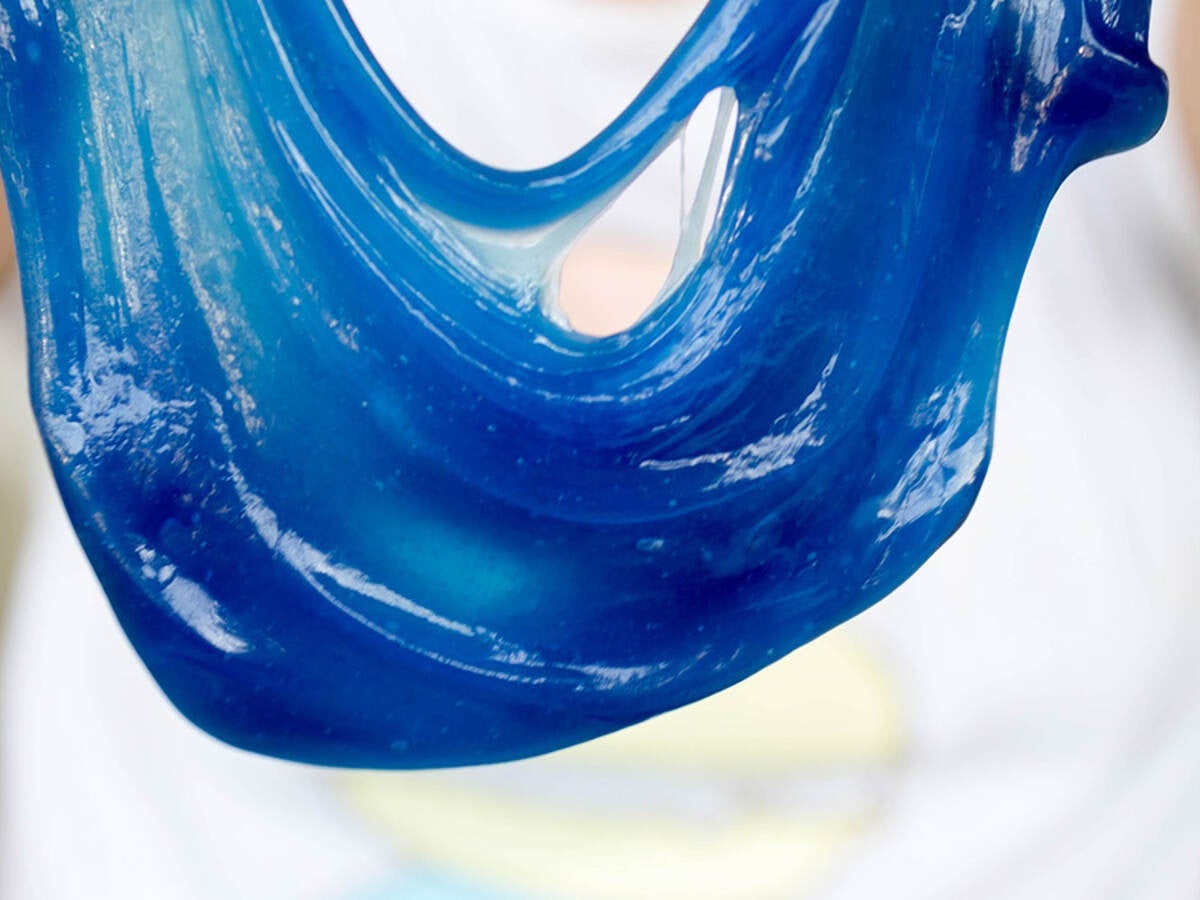August 7, 2018
Arts and crafts have been a part of rainy day activities since great-grandmas were folding the tabs on homemade paper dolls. In recent years, arts and crafts have also morphed into messy play. The newest wave of this sensory fun is slime, a sticky, gooey substance that kids are making at home, selling on the playground and purchasing in stores.
What is it?
Slime is a unique sensory play substance typically consisting of polyvinyl alcohol (PVA), a solution like white glue, and borate ions, commonly found in borax. When the adhesive reacts with the borate ions, it creates a thick, sticky “non-Newtonian fluid,” which means that it is neither a liquid nor a solid.
It can be picked up as a solid, but flows (oozes) like a liquid, much to the delight of every preteen that squishes, stretches and embellishes it with glitter, perfumes and food color.
What’s the problem?
Borax (and other boron derivatives like sodium borate, sodium tetraborate or disodium tetraborate) is used to cross-link with the glue to create the rubbery substance. Overexposure to boron can irritate a person’s skin, cause respiratory problems and lead to gastrointestinal bleeding if ingested.
While reports of slime injuries to children appear to be primarily caused by homemade slime, the U.K. consumer group Which? tested the ingredients of 11 popular slime products sold in the U.K., determining that eight of the 11 products tested contained higher than recommended levels of boron. One product had more than four times the European Union (EU) safety limit, the tests found.
Governments weigh in on slime
As the popularity of slime continues, governing bodies are taking notice and determining what regulations need to be addressed to ensure safety is upheld. Jordan’s Ministry of Health banned the “import, manufacturing, possession or trade of slime” due to the presence of toxic chemicals that pose serious health risks to children, according to a March 11, 2018 report by The Jordan Times.
Norway and the United Arab Emirates have also banned select slime brands sold in their respective countries, and Health Canada is “advising Canadians to avoid using boric acid for arts and crafts projects, such as homemade slime or modeling clay.”
Safety and Compliance
Which? findings have been passed on to the U.K. Office for Product Safety and Standards (OPSS). In the meantime, UL strongly encourages the assessment of manufactured slime formulations to verify product safety.
What can you do?
If you enjoy making and using slime, there are options for you. Do your homework. Read the ingredients of store-bought versions or contact the companies for verification that the substance has been tested and is safe.
For homemade versions, there are recipes posted on the internet that do not contain boric acid; however, read the labels of the ingredients to ensure no boron derivatives, such as sodium borate, sodium tetraborate or disodium tetraborate, are included. Sometimes fabric softener or contact solution/eye drops are used as an alternative to borax. These products sometimes contain boron.
Messy play, like slime, are beneficial activities that encourage exploration, discovery and learning. Help children enjoy the experience while being vigilant with the products you use and the supervision you provide.
UL’s Expertise
UL’s team of quality assurance experts support the toy manufacturing industry’s drive to bring safer products to the world market. For more information on UL’s efforts in the toy industry, visit our Consumer and Retail Services site.




